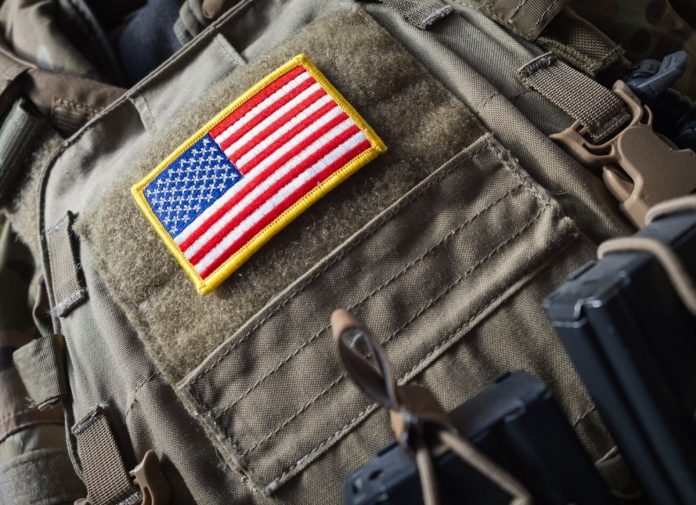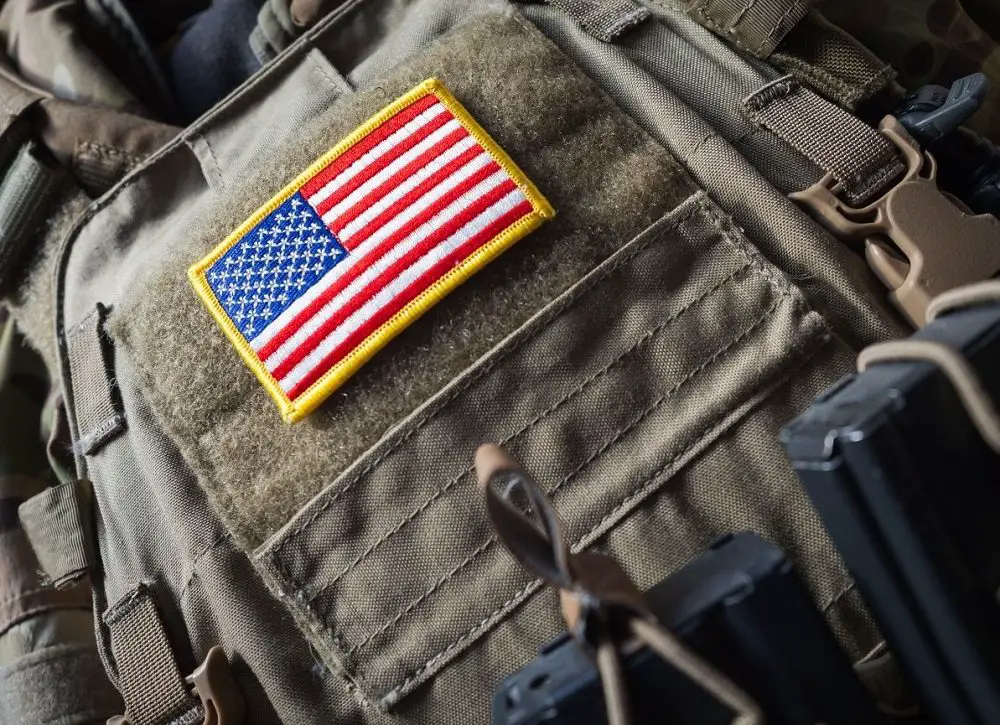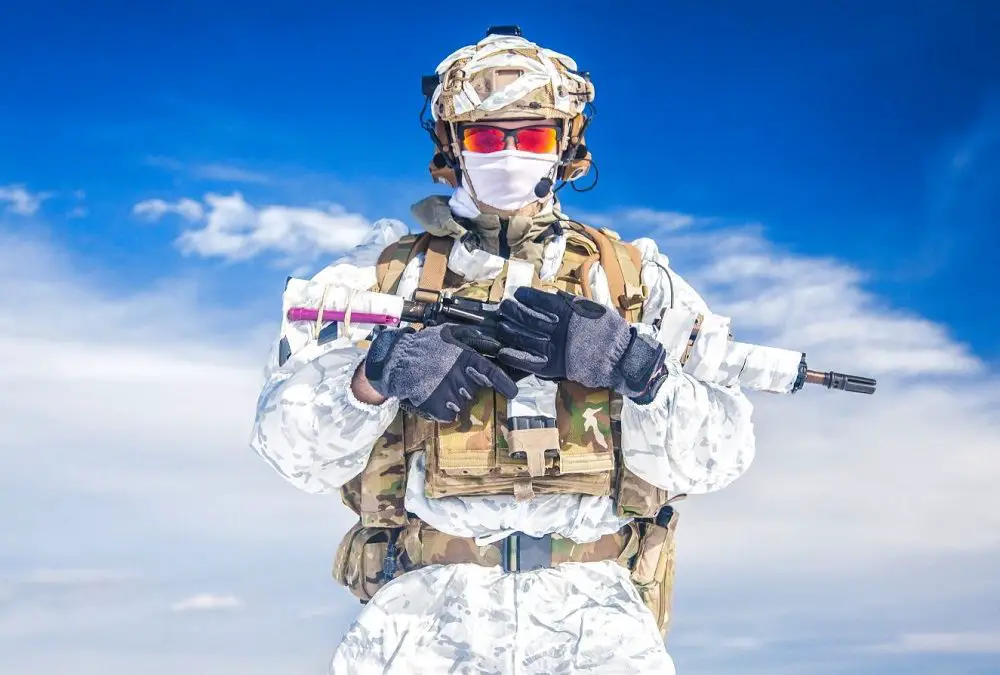How we carry our equipment and protect ourselves when SHTF can dictate many different aspects of our survival and how likely we are to be able to escape or handle a survival situation.
Many people are now familiar with bug-out bags and the importance of keeping equipment prepared and ready to go at all times, but there are other convenient ways of carrying gear, and one of the methods growing in popularity is the use of chest rigs, harnesses and plate carriers.
Those of you who have served in some capacity will be well aware of the utility these devices can bring, but many people who have seen an action movie or played a video game will also have some idea of what these devices are and how incredibly useful they are, even if they’ve never actually used them before.
Chest rigs, plate carriers, tactical vests, and other chest-mounted carrying equipment is becoming incredibly popular, not only because it looks kind of badass, but because it’s incredibly practical.
However, there are some key differences between the different types of carriers and rigs that beginners and even experienced veterans may not be totally familiar with or aware of.
Knowledge is power, after all, and being able to make an informed decision about what type of carrier you use can make a huge difference in your survival capabilities and your plans/preparations.
In this guide, we’re going to unpick the intricacies of these different rigs as well as their benefits and other key information to help you find a solution that complements your goals and existing equipment perfectly so that you can upgrade your gear and massively improve your chances of survival and success in a SHTF scenario.
But first, let’s define what the different carriers actually are, for those people who aren’t aware.
What is a Plate Carrier?
A plate carrier is a specific type of chest-mounted system that is designed to hold armored plates of varying strength and materials which can protect the vital organs in the upper parts of the chest and abdomen.
These systems are most commonly used by military forces and law enforcement and depending on the type of plates used they can stop varying calibers of bullets as well as other projectiles and threats, significantly reducing the risk to the person wearing the plate carrier.
You may be thinking, isn’t this just a bulletproof vest?!
Not quite.
Bulletproof vests are much simpler and old-fashioned in their design, and are often bulkier, less convenient, and less utilitarian, and are more common among press and civilians who are in need of extra protection.
The plate carrier differs in that the plates can be removed, replaced, and changed easily, quickly, and efficiently, and that plate carriers also include elements of chest rig and tactical vests such as straps, pockets, mounts, and holsters to allow users to keep all their equipment close and ready while also benefiting from the protective elements of the carrier.
Plate carriers normally use hard armors such as level IIIA or IV plates and are designed to withstand a lot of punishment up to and including rifle fire.
What is a Chest Rig?
Chest rigs are mounting systems that comprise various straps, holsters, and pockets which can be worn as a single unit on the chest. These systems are used by various agencies and entities, most commonly military and law enforcement, however, the utility of these systems make them common among other professions too.
Chest rigs are made of nylon or other tough materials and generally hold various items from knives and pistols to water canteens, magazines, food, and other essential gear someone may need.
The crucial thing about chest rigs is that they do not comprise any type of armor at all, and are strictly a series of well-designed and practical pockets and straps that aid in the convenient movement of equipment by personnel.
What’s the Difference Between Them?
Many years of botched jargon and confusing descriptions have muddied the water considerably, and many people today use the terms chest rig and plate carrier interchangeably, however, this is a mistake and misconception that could have dangerous repercussions.
Plate carriers are totally different from chest rigs, and while there are some similarities these are not interchangeable pieces of equipment.
Plate carriers are designed to provide protection via armored plates from various weapons, and while they can come with storage capacity for equipment and supplies, their primary function is to protect the vital organs of the torso by using these plates.
Chest rigs do not comprise any protective armor whatsoever and have no system for mounting or using armored plates or any other form of armored protection equipment.
Chest rigs are designed simply to carry equipment, and while they can be and have been used in military and law enforcement scenarios historically and even currently, they are not protective and are simply for utility alone.
What is a Tactical Vest?
A tactical vest is very similar to a chest rig and is essentially a sub-category of chest rigs designed for tactical usage.
They do not comprise protective plates of any sort, and the reason for their different name is that tactical vests tend to wrap around the body completely like a vest or gilet, while chest rigs typically only mount on the chest and use straps around the shoulders and back to hold the rig in place.
Tactical vests perform much the same function as a chest rig, with some additional comfort and potentially more storage, however, it really depends on the type of system being used.
Are Tactical Vests Bulletproof?
Almost certainly not. Only plate carriers with the proper plates mounted inside and certified bulletproof vests are capable of stopping bullets, and this depends on the caliber of the bullet as well as the class and rating of the armor being used.
Tactical vests and chest rigs have no means to mount or use armor, and so are not bulletproof or even stabproof usually.
What Are the Benefits of a Chest Rig?
Despite the fact they are unarmored, chest rigs are actually very popular and very useful, with a range of benefits to preppers and survivalists.
Chest rigs are all about convenient and practical storage.
The benefits of a good chest rig are that you can carry additional gear and that it is always ready to be used, as the gear is located within hand reach at a moment’s notice somewhere directly in front of your torso.
The other benefits of chest rigs are that they keep the weight evenly distributed across your chest and close to your body which reduces strain and fatigue, and are also quite comfortable and lightweight compared to plate carriers and other systems that use armor.
What is the best Chest Rig?
There are many excellent brands and designs for chest rigs, but there are some which are slightly more popular than others.
Any rig that fits well and has ample storage is a solid choice, but if you’re after suggestions you should definitely consider the Condor Tactical Rapid Assault Chest Rig or the Haley Strategic D3CRX Chest Rig.
Both of these systems offer ample storage for mags and other equipment, and while Condor is a little more budget it’s a great starting point until you can afford something a bit more Gucci like the Haley.
How Long Do Chest Rigs Last?
If looked after correctly, chest rigs can last a very long time, but ultimately their longevity comes down to the quality of the design and material, as well as how heavily it’s used.
Rigs by premium brands that are used sparingly could conceivably last many years, while cheaper rigs will generally start to give way sooner, especially after extensive use.
Look for warranties and other guarantees, as well as for quality brands to ensure your investment lasts and remains reliable into the future.
Are Chest Rigs Legal?
While there are many laws at the state and federal level governing the use of body armor and plate carriers, chest rigs that do not use armor are often totally legal and there is no need to worry about using these for hunting or hiking as long as they are simply for mounting your equipment and not using armored plates.
For your own safety, it’s best not to wear a chest rig out in populated areas as this could lead to a panic or alarm and concern innocent people or even police on patrol. Wearing rigs like this unnecessarily also puts a target on your back and makes you stand out, which is the opposite of what survivalists and preppers should strive for. Prepping isn’t about cosplaying as the military or John Wayne, and anyone who thinks it is has lost sight of the true nature of survivalism and prepping.
What Are the Benefits of a Plate Carrier?
The benefits of a plate carrier are that they can protect you from serious harm should you get shot at or stabbed, and this is what sets these systems apart from standard chest rigs.
However, there are drawbacks too, as these systems are often heavier when the plates are mounted and can lead to fatigue. They can also be more expensive and there are more legal concerns when purchasing and using these systems than standard chest rigs, so while the protection they offer is extremely important and desirable, it doesn’t come without serious downsides and tradeoffs.
What Size do you Need?
The size you need will be dictated by the size of the plates you need as well as the size of your body. Ensuring a good fit is critical to ensuring you get the best protection from the plates while maintaining a relatively stable and user-friendly setup and weight.
It’s also important to ensure that the plates you want are compatible with the carrier you’re planning on using.
How Practical are Plates?
It depends on the plate being used. There are lighter and smaller plates or larger and heavier plates, and there are obvious differences and tradeoffs between them.
Generally, though plates are fairly practical as long as they are mounted correctly and the carrier is worn properly, however, the added weight of plates can fatigue you much more quickly, especially if you’re carrying other equipment in the carrier.
What is a Jumpable Plate Carrier?
This is a term that was coined by Crye Precision, one of the leading manufacturers of plate carriers and military equipment. It means that a carrier has been designed to be as light and maneuverable as possible, giving a good range of motion and limiting the impact the carrier has on an individual’s physical performance and capabilities.
Naturally even these carriers will still impact your performance, but this impact will be significantly lessened.
This term isn’t commonly used and is more a marketing term for Crye than a specific type of carrier you can use.
How Long do Plate Carriers Last?
Again, much like chest rigs, plate carriers come in various styles and from various brands leading to significant differences in quality and durability.
However, these carriers are often very robust and designed for rigorous and extensive use in harsh environments, meaning your rig should last a very long time if used properly and well maintained, meaning it can be a sound investment for the long term.
Are Plate Carriers Legal?
It depends, and plate carriers are much more regulated than other standard chest rigs and tac vests.
It is illegal to purchase body armor of any type if you are a convicted felon and is a federal crime to do so.
While there are many different laws depending on your specific state, the federal government prohibits anyone who is a convicted felon from even buying or owning body armor of any type.
States often abide strictly by the federal laws also, but there are others who add additional rules which you should look into personally depending on your own state and circumstances.
For civilians, purchasing and using body armor is legal, however, each state has its own rules about what level and type of armor you can own and use, as well as where it can be worn.
Are Plate Carriers Bulletproof or Stab Proof?
Yes, as long as the proper plates are mounted inside.
Plate carriers themselves are not stabproof or bulletproof if there are no plates mounted inside, however.
What is the best Plate Carrier?
There are several types of excellent plate carrier available such as;
The AR500 Veritas Modular Plate Carrier
The Spartan Armor Systems Leonidas Plate Carrier
The AR Freemen Plate Carrier
Each of these systems has its own pros and cons, and plate carriers, even the cheaper options, don’t come cheap, but they are invaluable for protection and survival purposes in the worst possible conditions and scenarios.
Plates
Plates come in various sizes and ratings.
Typically they come in extra small, small, medium, large, and extra-large and each weighs a different amount and offers a different level of protection.
What Size Plate do I need?
It depends on the carrier you’re using as well as your own size and protection requirements. Look into the dimensions of your body as well as the dimensions of your carrier and look for plates that will work well with these, as well as what kind of protection you’re looking for.
What is the best Plate?
There are several great plate manufacturers currently offering quality products, and two of the best are AR500 and Spartan Armor Systems, which make superb plates that can offer you significant protection and peace of mind, and which pair well with their own carrier systems.
Can Civilians own Plates?
It depends! It’s illegal for felons to own and purchase body armor of any type and is a federal crime in the US, however, rules for civilians depend on your specific state.
Some states prohibit the shipping of armor, while others prohibit wearing armor in certain places, while others are more relaxed. Look at your own state-level laws to be certain before you purchase any armor or carrier system.
Can You Wear Armor in Public?
It depends on the specific laws in your state, but if you’re legally allowed to own body armor in your state, you may be able to wear it publicly unless the laws of that state say otherwise, so make sure you check this before wearing any armor in public.
Even if it’s legal however we would recommend that you don’t wear armor in public unless it’s a survival scenario as this can put a target on your back and make you stand out which is not what any survivalist should be aiming to do.
Which is Best for You?
The choice between a plate carrier and a chest rig isn’t an easy one, and there are compelling arguments for both systems.
If you’re someone interested in getting the most protection you can possibly get, looking into plate carriers is the way to go to ensure you can meet these needs, however, it’s important to be aware of the many drawbacks plate carriers come with.
For those people who want something convenient, cheap, and lightweight, a chest rig is much more practical and allows you to carry all your equipment very effectively, however they don’t offer the protection that carriers do for you. This is something to consider and keep in mind as this is a considerable tradeoff.
Only you can decide what’s best for you and your setup, and will often be dictated by other elements of your plans such as your bug-out plan, whether you plan to escape or shelter in place, your supply situation, your fitness, budget, and other key considerations that dictate how your prep and how you plan.
Conclusion and Final Thoughts
Overall, both chest rigs and plate carriers come with significant benefits as well as potential drawbacks, but both systems can definitely improve your survival chances when used correctly and are definitely worth serious consideration for any dedicated prepper or survivalist.
When choosing a system to use, make sure to pick a reliable and well-reviewed product that meets your needs.
via SHTFPreparedness




